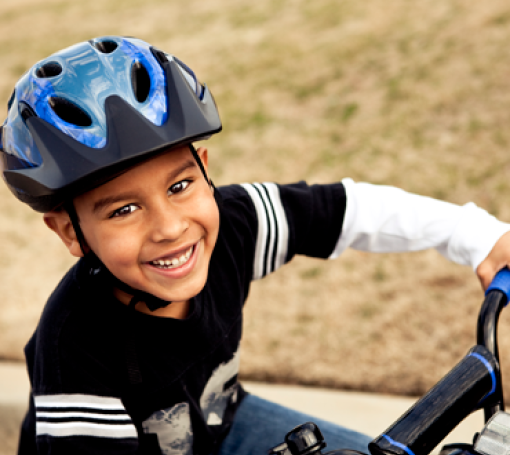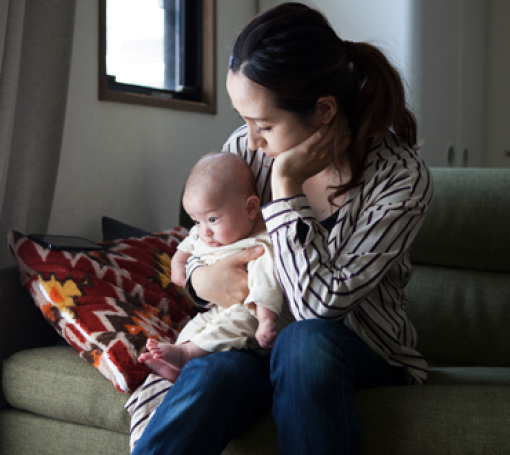We’ve been there, you’re in the checkout line in the store and your 4-year-old asks loudly, “Dad, why does he look like that?” It leaves you wishing you could fade into the candy display!
Kids ask questions, sometimes awkward or embarrassing questions. They notice people and things around them in a delightfully curious way that we adults have long abandoned. It is natural and normal for children to notice what is similar and what is different from people in their family group. Even children as young as 3 months old notice when someone looks different than their primary caregivers.i
As children grow into school age kids, they may meet folks very different from their family. They start to hear of current events, and to form more complex ideas of their world. So, how do you explain that your child’s playmate’s family doesn’t celebrate Christmas, but they do have a celebration with family, friends and delicious foods called Eid al-Fitr? What might you say when your child asks about slavery? Or when they hear about recent anti-Asian incidents when you forget to turn off your news feed? Do we talk about it? Do we talk about race?
Yes. Yes, we talk about race.
How do we do this?
Many nonwhite families communicate about race often. But actually, so do all families. As Howard Stevenson, a clinical psychologist and professor at University of Pennsylvania said, “You are always communicating about race, whether you talk about it or not."ii
Each family has unique traditions, political beliefs, spiritual practices, and values. But even with these differences, most strive to raise kind, considerate, emotionally stable children who possess the skills needed to be confident in themselves and to connect meaningfully with others. Infants and young children add to a strong, stable sense of self when they identify with parents and caregivers.
Infants and children with positive impressions of themselves and their caregivers have a greater sense of safety and belonging that contributes to self-esteem. A positive sense of race and culture adds to this positive sense of self. Racism damages this for everyone, but especially for people of color. That is why we should talk about race.
SO…how do we talk about race?
- Start early. Talk with your child about natural interactions in their day, discuss what your child sees around them. Do not try to be colorblind! The world sees race for better and for worse. Being ‘colorblind’ denies the culture and experience of people of color. Instead, we can continue to learn respect for one another’s differences and similarities.
- Let you child lead by listening to them and observing them. Moments to discuss race will naturally arise when watching media, reading together, and interacting with others. When young kids notice differences and similarities remember that it is about the current situation and not about a broader socio-political context. Your 3-year-old isn’t commenting on immigration when they notice their friend is from India. Ask them what they noticed, what is different, what is the same as your child? For example, if your child states, “Maya’s skin doesn’t turn pink like mine does in the sun,” you might ask, “When does your skin turn pink? Is it when you are hot or embarrassed? Is it from too much sunshine?” Point out that Maya might feel hot, embarrassed, or be in the sun too long just like your child (a similarity) but is shows up differently for her.
- Know who you are. Acknowledge your own bias (children often see their parent’s biases) and be mindful of words you use to describe others. Children of all ages learn much more from our day-to-day actions than our words. It is ok not to know everything, be thoughtful about your own feelings and opinions. If you make a mistake and your child sees this, talk about what you might have done differently.
- Share personal examples. Was there a time that you were treated unfairly or felt out of place? You can share this with your child. Talk about what you did and how you felt. Did you stand up for yourself? Why, or why not? You and your child can explore how to respond.
- For example, “I was at a party, and I was the only black person, I felt uncomfortable.” Ask your child what they might have felt or done. What could others have felt or done?
- Embrace yourself. Talk with your child about what you love about yourself, your family, and your cultural traditions. Talk about when you most feel yourself. Ask them what they love about themselves. A strong sense of self, and sense self and family, love and acceptance can help a child love and accept others.
- Stay curious, stay respectful, and develop cultural literacy about others. Your child learns by watching you. Part of being a good neighbor is seeing your neighbor. Remember, this is a lifelong learning experience. Celebrate your own culture and celebrate differences.
- Be honest about bigotry and oppression. This does not mean that when your child hears or sees anti-Asian sentiment you should dive into a historical presentation about Japanese internment during WWII. It does mean you can talk about how some people have treated others unfairly. Listen to your child, ask them what they see or how they feel, and how the people involved might have felt and how they were hurt.
- Express hope and point out that change happens. For example, if your child asks “Is it true that black people were forced to be slaves? My black friend said they are still treated badly sometimes.” Discuss this honestly at your child’s level. Let them have their own feelings about it, but also be able to point out examples of people learning to be more kind and just. Give examples of how we can keep learning to treat one another respectfully and fairly. Keep these examples at your child’s developmental level.
Some worry that these conversations burden children. Far from it, these conversations at a developmentally appropriate level give children tools to care for themselves and those around them. Talk about what they might do if they witness differential treatment or obvious racism. Let kids know it is ok to speak out. They can practice with you. Pause, consider the situation, and say something. If nothing happens or the child doesn’t feel they can do that, talk to a trusted grown-up. If the grown-up doesn’t listen, tell another trusted adult, and of course, tell your parent.
In the end be calm, be loving, follow your conscious and be kind.
i David J. Kelly, Paul C. Quinn,2 Alan M. Slater,3 Kang Lee,4 Alan Gibson,1 Michael Smith,1 Liezhong Ge,5 and Olivier Pascalis1 Dev Sci Volume8, Issue6, November 2005, Pages F31-F36
ii Vox How to talk to kids about racism, explained by a psychologist. By Anna North Jun 9, 2020, 7:00am EDT
Keep Reading
View All Posts
Helmet Safety for Kids: Protecting Young Minds and Futures
As parents, safety comes first. A properly fitted helmet is a simple way to protect your child from serious injuries. Learn how to choose the right one for maximum safety.

Postpartum Mental Health
Welcoming a new baby brings a mix of emotions. While some mood changes are normal, postpartum mood disorders can make this transition overwhelming. Learn the key signs to watch for and what to do if you or a loved one needs support.


